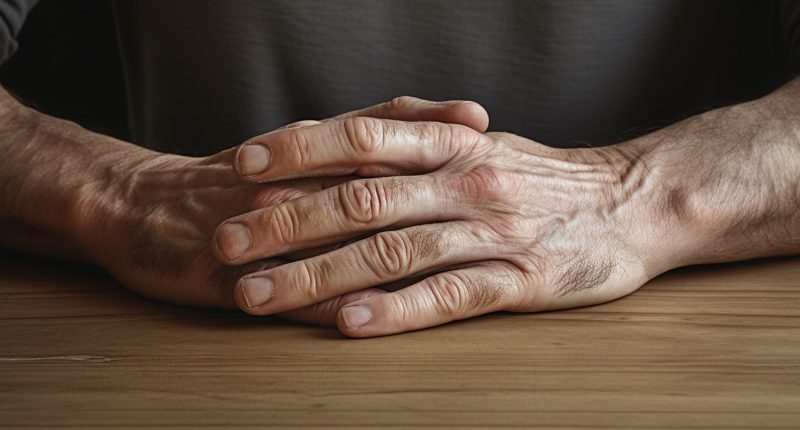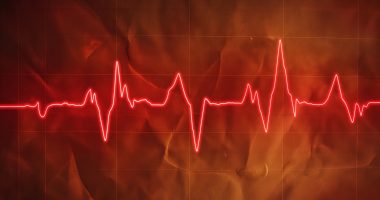Dupuytren’s contracture
What’s that?
Dupuytren’s contracture is a pathologic condition with a fibromatous lesion of the aponeurosis of the palm and other fascial structures of the hand and fingers. It is a non-inflammatory pathology.
About the disease
Palmar fibromatosis (Dupuytren’s contracture) is an idiopathic connective tissue disease with a characteristic clinical progression: at first, skin retractions appear, followed by subcutaneous hyperproliferative nodules and dense connective tissue tracts that form aponeurosis thickenings, infiltrate the dermis, and spread to the fingers. It leads to restricted mobility of the metacarpophalangeal, proximal, and distal interphalangeal joints and then to persistent contractures and deformities of the hand.
Along with hereditary predisposition, a variety of environmental factors are described, which include alcohol and nicotine addiction, hand traumatization, aging, and intense stress on the hands during labor activity. The risk group includes men, in whom this pathological process develops most often and often affects the right and left palms at the same time.
In this disease, there is an overgrowth of connective tissue around the tendons on the hand’s palmar surface. Consequently, they become shorter, the finger is in a state of persistent flexion, and its extension is limited or impossible. As a result, the function of grasping and holding objects with the hand is lost, and the hand becomes functionally impaired. The pathologically altered tendon is defined as a dense tendon on palpation, and palpation is often accompanied by pain. Progression of Dupuytren’s contracture can lead to complete immobility of the fingers.
The main treatment option for Dupuytren’s contracture is surgery. In the early stages, minimally invasive techniques can be used. At later stages, they are ineffective because they lead to the recurrence of the pathological process.
Types
In traumatology, it is expected to divide Dupuytren’s contracture into 3 degrees of severity:
- First degree. A nodule of dense consistency on the palm is no more than 1 cm in diameter. Unpleasant, painfulsensations can accompany the palpation of this thickening. The pathologic mass does not extend beyond the boundary of the metacarpophalangeal joint.
- Second degree. The skin coarsens, becomes tougher, grows distally, and reaches the first finger phalanx. At this stage, the skin fuses with the palmar aponeurosis and becomes coarse and dense. Tendon bundle tension and indentations are visually detected. The metacarpophalangeal joint is in a state of flexion at a right angle and even more. It becomes almost impossible to straighten the finger.
- Third degree. The pathologic ligament continues to grow in the distal direction and reaches the second to third phalanges. Persistent flexion affects not only the metacarpophalangeal joint but also the interphalangeal joints. Flexion is also sharply limited in these joints. In severe cases, complete immobility of the hand may develop.
Symptoms and signs of Dupuytren’s contracture
The fingers of the hand are categorized by the frequency of palmar fibromatosis lesions as follows:
- first place – the fourth finger, which is involved in the pathological process in almost every second patient;
- second place – the fifth finger, its lesion is observed in one-third of patients;
- third place – the middle finger, the lesion of which occurs in every fifth patient;
- The fourth place is shared by pathologic involvement of the first and second fingers (approximately 2-5% of cases).
The symptoms of Dupuytren’s contracture are specific, so objective examination and palpation of the hand are sufficient to establish the diagnosis. Signs indicating this disease are:
- the presence of a palm thickening in the form of a nodule or mass (the thickening may be single or multiple);
- the position of the fingers in a state of flexion;
- limitation of extensibility at the metacarpophalangeal and interphalangeal joint;
- the presence of bulges and retractions on the palm (due to adhesion of the skin to the aponeurosis);
- Rare detection of pain in patients – only every tenth person complains of pain localized on the palmar surface, but can irradiate to the upper segments of the hand.
Causes of Dupuytren’s contracture
The formation of fibromatous nodules and tendon-like tendons that limit the extension of the metacarpophalangeal and proximal interphalangeal joints occurs in people with genetic predisposition, unfavorable lifestyle, and micro traumatization of the hand during manual labor. However, the exact causes of Dupuytren’s contracture have yet to be verified.
The initial factors of Dupuytren’s disease pathogenesis that trigger the proliferation of perivascular fibroblasts, pericytes, and myofibroblasts under conditions of local oxygen deficiency are microvascular constriction and autoimmune damage of vascular endothelium. Along with the inner lining of microvessels, there is another target for initiating autoimmune lesions – perineural cells.
The presumed mechanisms of neuropathy of the finger nerves in Dupuytren’s contracture are their involvement in spiral traction and compression of the palmar nerves between the pathologically altered aponeurosis and the transverse carpal ligament. In patients with painful fibromatous nodules, the ingrowth of nerve fibers into the nodules and tendons was traced.
Diagnosis of Dupuytren’s contracture
Diagnosis of Dupuytren’s contracture, according to clinical guidelines, is based on clinical examination results – objective examination of the hand and palpation of its palmar surface. Additional methods are usually prescribed to establish the pathological process’s degree of progression and determine the optimal time for surgical intervention.
- An electroneurographic study of patients with Dupuytren’s contracture revealed a decrease in conduction velocity along the sensitive fibers of the median and ulnar nerves at the level of the fingers and the forearm.
- Ultrasound scanning helps visually assess the condition of the tendons involved in the pathologic process.
- X-ray helps to assess the condition of the bone tissue, which may be affected by the long-term existence of the contracture. Degenerative changes and ankylosis may develop in the metacarpophalangeal and interphalangeal joints.
Treatment of Dupuytren’s contracture
Despite numerous developments in minimally invasive techniques, including radiotherapy, corticosteroid injections, needle aponeurotomy, and collagenase injections, open fasciectomy remains the leading treatment for Dupuytren’s contracture.
Conservative treatment
In the early stages, conservative treatment methods can be used to slow the progression of the pathological process. The main options are:
- physiotherapy procedures that help to improve the condition of nerve tissue and increase microcirculation, as well as have a favorable effect on connective tissue structures;
- performance of physical exercises aimed at relaxation of the palm aponeurosis;
- wearing orthoses that fix the fingers in a state of extension – these structures are usually worn only when sleeping.
In those few patients who have pain syndrome, blockades with corticosteroids and local anesthetics are indicated. If the process progresses, surgery is necessary.
Surgical treatment of Dupuytren’s contracture
Surgical treatment of Dupuytren’s contracture is the primary method. It is aimed at the excision of pathologically altered connective tissue structures that limit the function of the hand. The doctor selects the optimal time for surgery based on the pathological process’s progression rate. Usually, surgical intervention is recommended if the involved joint is in a stable flexion position of approximately 30°.
If the patient seeks medical help late, it is only sometimes possible to restore the functional state of the hand, as persistent degenerative processes develop in the tissues. The only treatment option in this situation is arthrodesis – fixation of the finger in a physiological state but with loss of its ability to move.
All these surgical procedures are performed in more than 800 hospitals worldwide (https://doctor.global/results/diseases/dupuytrens-contracture). For example, Dupuytren’s contracture surgery is performed in 40 clinics across Germany for an approximate price of $5.9 K (https://doctor.global/results/europe/germany/all-cities/all-specializations/procedures/dupuytrens-contracture-surgery).
Prevention of Dupuytren’s contracture
There are no effective methods to prevent Dupuytren’s contracture. It is recommended to avoid traumatization of the hand, to do exercises to warm up the fingers, and to stop smoking. Compliance with these rules is especially indicated in patients with a history of hereditary diseases.
Rehabilitation and recovery after surgery
Complex recovery after surgery involves physical procedures, massage, and special exercises to train the hand.



